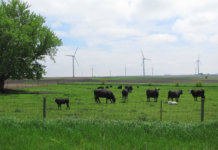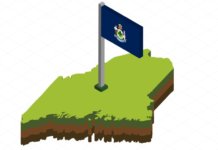Citing the need for grid modernization resulting in job creation, the Obama administration announced Wednesday that several transmission projects will be part of a pilot program designed to demonstrate expedited permitting and interagency cooperation.
The recently formed Rapid Response Team for Transmission (RRTT), which consists of nine federal agencies, will work to speed project development by coordinating permitting reviews and consultation schedules among federal and state agencies, as well as tribal governments. The RRTT will also utilize specialized personnel who have experience with transmission planning and development.
Building more transmission lines, which can be a lengthy process, is crucial in getting more clean energy onto the grid, according to U.S. Department of the Interior Secretary Ken Salazar.
‘Transmission is vital,’ he said during a press conference hosted by the Department of the Interior. ‘It's an essential component of our nation's energy portfolio, and as we move forward toward a more secure energy future and implement the president's energy blueprint, we know that solar, wind, geothermal, nuclear, clean coal and natural gas all play a role. But it is absolutely critical that we have the infrastructure in place to deliver power to our homes, our businesses and our economy.’
Seven existing projects that span 12 states will take part in the pilot project, which aims to reduce the costs involved in transmission permitting, according to Nancy Sutley, chairwoman of the White House Council on Environmental Quality.
‘Electric transmission projects is one specific area where the administration is acting to catalyze the transition to a clean energy economy,’ she said during the press conference. ‘Building electric transmission lines involves coordination among federal, state, tribal agencies â�¦ improving the overall quality and timeliness of all of these procedures will enable the federal government to help expedite a new transmission line.’
The projects, which run through Arizona, Colorado, Idaho, Minnesota, New Mexico, Nevada, Wyoming, Utah, New Jersey, Pennsylvania, Oregon and Wisconsin, include the following:
- The Boardman-Hemingway line, a 500 kV project proposed by Idaho Power that would create an approximately 300-mile, single-circuit line from a proposed substation near Boardman, Ore., to the Hemingway Substation near Melba, Idaho;
- The Gateway West Project, jointly proposed by Idaho Power and Rocky Mountain Power, that would add approximately 1,150 miles of new, high-voltage lines between the Windstar Substation near Glenrock, Wyo., and the Hemingway Substation;
- The Hampton-Rochester-La Crosse Line, a double circuit, 345 kV line that will run between a new substation near Hampton, Minn., a new substation north of Pine Island, Minn., and continue on to cross the Mississippi River near Alma, Wis.;
- Portland General Electric's proposed Cascade Crossing Transmission Project, which includes approximately 210 miles of 500 kV transmission line from Boardman to Salem, Ore.;
- SunZia Transmission LLC's proposed construction and operation of up to two 500 kV transmission lines originating at a new substation in Lincoln County in the vicinity of Ancho, N.M., and terminating at the Pinal Central Substation in Pinal County near Coolidge, Ariz.;
- PPL Electric Utilities (PPL) and Public Service Electric and Gas Co.'s (PSE&G) proposal for the Susquehanna-Roseland project, which includes an approximately 145-mile 500 kV line from the Susquehanna Substation in Pennsylvania to the Roseland Substation in New Jersey; and
- TransWest Express LLC construction and operation of a 600 kV line that will run more than 700 miles; the project would interconnect with the existing transmission grid near Rawlins, Wyo., and the Marketplace Hub, near Las Vegas.
‘These projects, when built, will be part of a smarter, more robust electric grid that will create thousands of American jobs and accelerate the growth of domestic clean energy industries, translating into more energy choices and cost savings for American consumers and a more secure energy future for our country,’ Sutley said.
The transmission projects are expected to be highly beneficial to renewable energy projects. In fact, the TransWest line is expected to carry up to 3 GW of wind power.
"[The American Wind Energy Association (AWEA)] applauds the Obama administration for taking steps to move from merely talking about transmission to actually getting projects permitted and under construction," Tom Vinson, AWEA's senior director of federal regulatory affairs, said in a statement. "An expanded transmission grid is critical not just for renewable energy, but also for our economic and national security by improving reliability and providing access to lower cost energy for consumers."



